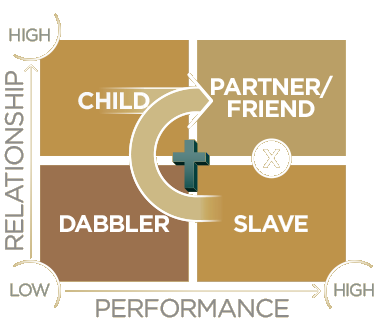View Prospectus PDF
Bible Curriculum FROM ADVENTIST EDUCATION

navigation
Approach & Rationale


navigation
The Primary Purpose of the Curriculum.
Never in our world’s history has there been a greater time to make this the focus of our young people in the Seventh-day Adventist church.
The primary purpose of the Adventist Encounter Curriculum is for all our students, both elementary and secondary, to have a solid, deep, and personal knowledge of the truths of the Bible (Seventh-day Adventist fundamental beliefs); respond to Christ’s invitation to live in a lifelong, meaningful relationship with Him; and be passionate about the salvation of others.
As Ellen White shares, “Never has there been a time when man has been so responsible to God as he is at the present hour. Never has there been a time when man’s position has been so critical as it is now. All things in nature and in the world at large are charged with intense earnestness.”
The Remnant Church: Its Organization, Authority, Unity, and Triumph. Elmshaven Office, p. 50.
Lordship Model
Pastor Ben Maxson's Lordship model focuses in on this quadrant from the former model which can help to further clarify growth within this phase.
Dabbler · A person who is low in performance and relationship is a Dabbler. This person plays with religion and has no real commitment to it. A Biblical example of a Dabbler is the woman at the well before she met Jesus.
Slave · Someone who is high in performance and low in relationship is a Slave. This person is focused on actions and appearances, yet doesn’t really know God. A Biblical example of a Slave is Saul of Tarsus, who was driven by performance without a relationship with God, but after meeting Jesus, accepted Him and was transformed.
Child · A person who is low in performance but high in relationship can be spiritually defined as a Child. This person is impulsive, and not very capable, but has room to grow. A Biblical example of a child is Mary Magdalene.
Partner-Friend · Finally, a person who is both high in performance and high in relationship can be referred to as a Partner-Friend. There are numerous Biblical examples of Partner-Friends such as Enoch, Daniel, Moses, Esther and many of the heroes that we aspire to be like.
It is impossible to move from being a Slave to become a Partner-Friend. We must first be reborn again, through the process of justification, and become like a Child first. Then, through the process of sanctification, we become a Partner-Friend.
Rather than producing Slaves in our students, the goal of the Adventist Encounter Curriculum is for students to live in a Partnership/Friendship with Christ. This curriculum seeks to build solid “performance” (knowledge in the Bible) as well as a living, lifelong relationship with the God of the universe.
Spiritual Growth Model
The ultimate goal of any Bible
curriculum is Discipleship.
In John 14:6 Jesus shares, “I am the way and the truth and the life. No one comes to the Father except through me.” As Bible teachers, we are called to encourage our students to come to Jesus, our only sure truth in an unstable, changing world.
When we daily surrender our lives, everything changes. Growing in Christ and following Him is our focus in the Bible classroom, where transformation (rather than just information) is our goal.
This model is noted in each Encounter teaching unit.
First, we can seek to have a clearer vision of God and His wonderful character, which has been distorted since Eden.
(Jonah 4:2; Micah 7:18; Zeph. 3:17; Rev. 3:20)
Then we can look to the gospel of Jesus—“the visible image of the Father,” Col. 1:15—to deepen our understanding of God.
(John 1:18; 14:8,9; Heb. 1:3)
Once we understand and accept what Jesus did for us at the cross (justification), we ask Him to be the Lord of our lives (Lordship), where we submit our lives to Him.
(Acts 10:37; Rom. 10:9)
Finally, when we accept His presence into our lives, we become a living sacrifice for Him.
(Romans 12:1, 2; Gal. 2:20; Eph. 3:17; 2 Cor. 13:5)
Spiritual Growth Model © Ben Maxson.
So what's new?
We base our pedagogy on encouraging all students to grapple with content in engaging ways. As a result, an inductive approach to Bible study is featured with increased regularity throughout the grade levels. In the truth of God's Word, teachers and students make discoveries from the truth of God’s Word that can be embraced and lived.
Four distinctive features have characterized our approach to the Adventist Encounter Curriculum,
Tap a feature below to see its description.
1. Theory +
Biblical Discipleship
As inferred, we have abandoned a purely “educationally cognitive” approach to Scripture, and embraced biblical discipleship in response to the Great Commission. We seek to touch the heart as well as the mind. We believe this will establish an important pattern for life-long spiritual growth and devotion.
2. Content +
Topics
The Encounter Curriculum focuses on the truths of the Bible in all teaching units. All content relates to the Personhood of God—for Scripture testifies of Him. Acknowledging the importance of meaning and context in the learning process, all teaching units have a central biblical narrative focus and are thematically inter-connected to help build students' faith.
3. Methodology +
Creativity, Higher Order Thinking
One feature of the Encounter Curriculum is the manner in which it pursues with more rigor than we perhaps have in the past, what Ellen White exhorted us to do decades ago: “to train thinkers and not mere reflectors of other men’s thoughts.” Education, p17
In light of this, we have moved away from a textbook orientation, and provide teaching units and resource materials for teachers that outline a range of learning activities intended to encourage the thinking of each student. The main textbook students will use is their Bible. The multiple intelligences are harnessed so that each student is challenged and stretched along their learning journey
4. Assessment +
Variety of Approaches
The Encounter Curriculum’s focus on process as well as content means that the nature of assessment looks different in the classroom. The teaching units include both formative and summative assessment, since ongoing, visible, lifelong learning from the Bible is the goal. The aim of assessment tasks is for students to understand and grapple with the topics explored in class, and to be able to apply, analyze and create personal and practical applications as a result of their learning—the goal of transformation foremost in mind.







